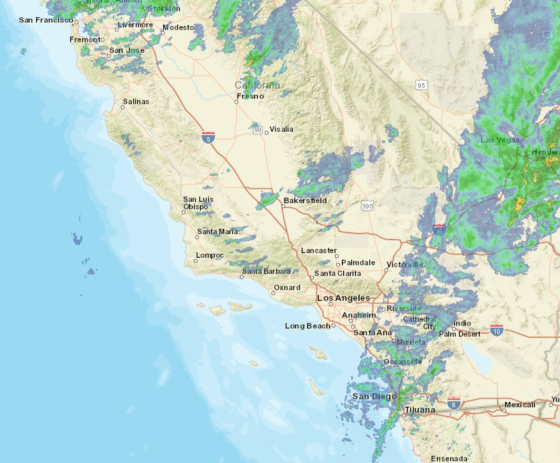A combination of torrential rain, violent flooding, and powerful wind in California has killed at least 14 people since Sunday, led to evacuation orders for tens of thousands of people, and left more than 150,000 electric customers without power.
Roads across central and northern California have turned into impassable rivers, leading to school closures and limited mobility exacerbated by fallen trees and mud and landslides along the state’s steep hillsides. The National Weather Service placed large swaths of the region under flood watch and noted that almost all of the state has seen 400% to 600% more rainfall than usual over the past few weeks.
[time-brightcove not-tgx=”true”]
Like many of his colleagues, Mike Doll, a senior meteorologist at Accuweather, has been following the flooding and examining the greater pattern of adverse weather this season in California. “Going back to the latter part of December is when this train of storms started and each one’s been varying in intensity,” Doll says. “It’s sort of a compounding factor, so each storm is bringing areas of heavy rain to many of the same areas that were hit by the previous storm, then the next one is going over similar areas, then the next storm and on and on…”
Here’s what to know.
Tens of millions under flood watch


As of Tuesday afternoon, the National Weather Service had a flood advisory in place for more than 22 million people across California and a small part of southern Oregon.
In areas where wildfires have weakened or cleared out the hillsides, the land is prime for flash flooding and avalanches. “We’ve seen tons of reports of mudslides, rocks and boulders coming down on the roads,” Doll says.
It can take weeks for authorities to fully clear and drain fallen debris and pools of water that block highways and streets. Californians should “be prepared to evacuate and definitely heed those notices,” Doll says. “If you’re driving and you come across a flooded roadway, do not drive through it, because you don’t know how deep the water is. You don’t know even if there’s a road under that water.”
Thunderstorms moving from north to south also carry heavy winds that knock out power and threaten tornadoes in southern counties. “With every storm, we have the risk of high winds bringing down trees and power lines,” Doll says, explaining the massive infrastructure damage that storms have already begun to cause. Houses along hills and coasts are especially prone to damage and have limited evacuation capabilities.
Record rainfall

The mountainous Santa Barbara and Ventura counties have already gotten more than 16 inches of heavy rain. In Santa Barbara, the town of Montecito—famously home to Prince Harry and Meghan Markle, the Duke and Duchess of Sussex—is still recovering from wildfires and just passed the fifth anniversary of a mudslide that killed 23 people in 2018.
Los Angeles County has recorded up to seven inches of rainfall and downtown San Francisco was under flash flood warning on Tuesday. Oakland and surrounding areas are being pelted with hail. Around Sacramento, forecasts predict an additional six to 12 inches of rain through Wednesday.
“What tends to happen is when you get runoff, creeks and rivers start to fill up and then you get more heavy rain,” Doll says.
Those living along rivers are particularly at risk. In central California, meteorologists are keeping a close eye on the Salinas River in Monterey County about an hour south of San Jose. “When it gets to 30 feet, which it’s going to be close to, there’s the risk of the entire city flooding,” Doll adds.
Treacherous conditions could worsen

Meteorologists predict the relentless rain will continue for at least another week. Forecasts predict dryer weather in southern California from Wednesday through Friday, but continued rainfall in the north as a cyclone brews along the Pacific Coast.
Heavy rainfall will likely return over the weekend and could damage vulnerable infrastructure and impede ongoing rescue efforts. On Monday, President Biden issued an emergency declaration to dole out aid and relief efforts in more than a dozen affected counties.
Like severe weather events around the world, the sudden change from scorching dryness to torrential downpours is catching Californians off-guard. Although not necessarily linked directly to climate change, such phenomena are becoming more common as the world warms and weather becomes more unpredictable.
Doll points out one potential benefit of all the flooding. For California’s arid landscape, stockpiling ample water now across its reservoirs could be a big help for the warm months when droughts and wildfires plague the state.



0 Comments